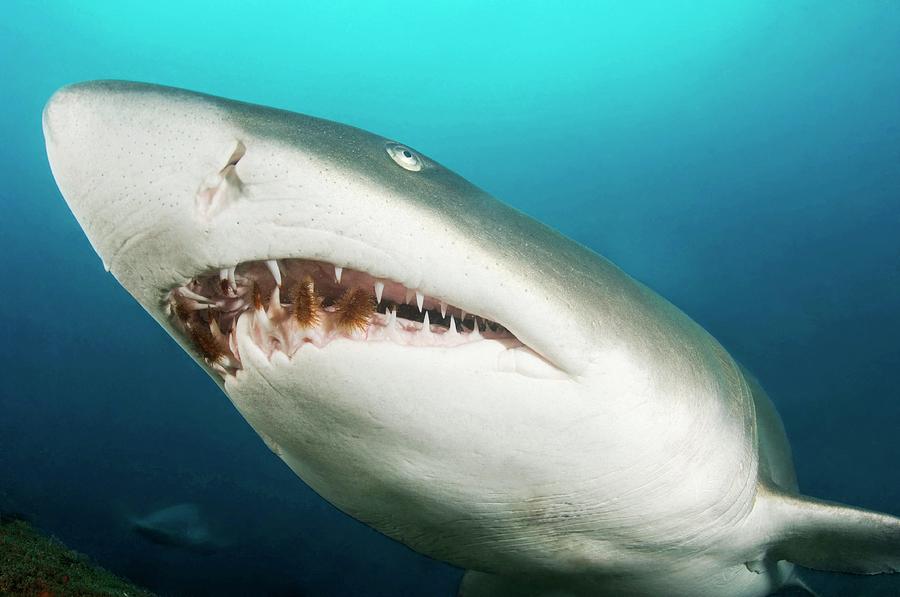Snaggletooth Shark
Snaggletooth sharks are belong to the family of Weasel Shark. The scientific name for these sharks is Hemipristis elongata.
Hemipristis in approximate translation from Greek may sound like «Half Saw». This name is received because of the shape of their pointed teeth. The teeth of sharks are quite unusual in appearance and have serrations along their edges. On the upper jaw, they are distinguished by size and curved shape, as well as sharpness. The teeth on the lower jaw are also sharp and bent in the shape of a hook.

These sharks are found mostly in coastal waters with warm temperatures; they are most often observed in the Indian and Pacific Oceans. Their habitats are mainly islands and continental shelves, with depths exceeding 30 to 130 meters.
The body of Snaggletooth sharks is recognizable by its gray color. Their snout is lengthened, and their teeth protrude when their mouth is closed. Long gill slits can also be observed. The fins are curved to a large extent. Adult individuals reach a size of up to 170 cm for females and up to 145 cm for males. And the longest instance ever recorded was 240 cm in length.
The food of Snaggletooth sharks is diverse and other sharks may even be included in their diet. But the basis of the food regime of this species is composed of bony fish, crabs, stingrays, squids, octopuses, etc.
Snaggletooth sharks can be seen quite rarely. Their interactions with people are not recorded very often and they do not represent a particular danger. But at the same time, this species of sharks is recognized as vulnerable to extinction, since their number is reduced due to active fishing and the use of shark meat and fins on a large scale in the culinary of the Asian region.


